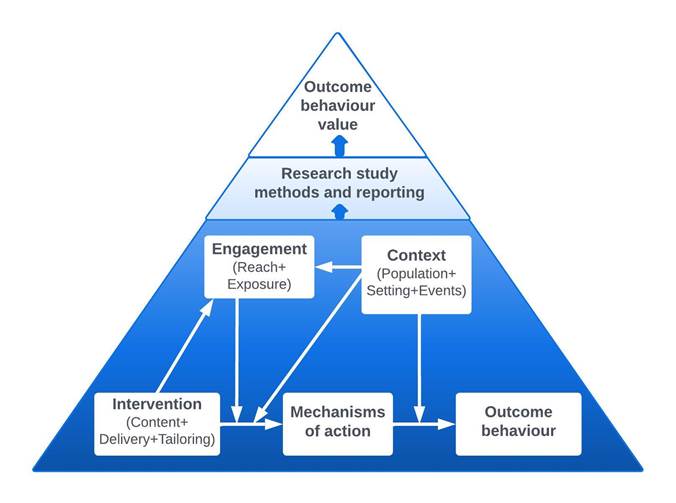The 'BCIO triangle' is the simplest way of showing the ways in which the main components of a behaviour change intervention and its context interact causally to produce an outcome value. The lower part of the triangle comprises the 'BCIO Scenario'.
By ‘scenario’ we mean the intervention (content and delivery), the mechanisms of action by which the intervention has its effect, and the effect itself i.e., the outcome behaviour. This causal pathway is itself influenced by the 'context' (consisting of the target population, setting, and current or past events) and 'engagement' (which is made up of reach and exposure). In an evaluation trial, a scenario could be one or more of the ‘experimental’ conditions and also one or more of the ‘comparator’ (‘control’) conditions.
In order to evaluate an intervention, the BCIO needs to capture features of the study and its reporting that are then associated with a reported 'outcome behaviour value'. Note that the outcome behaviour value is a product of the BCIO scenario, the study methods and reporting.

